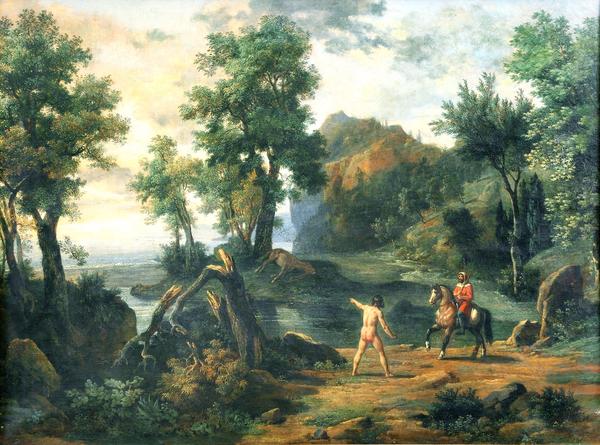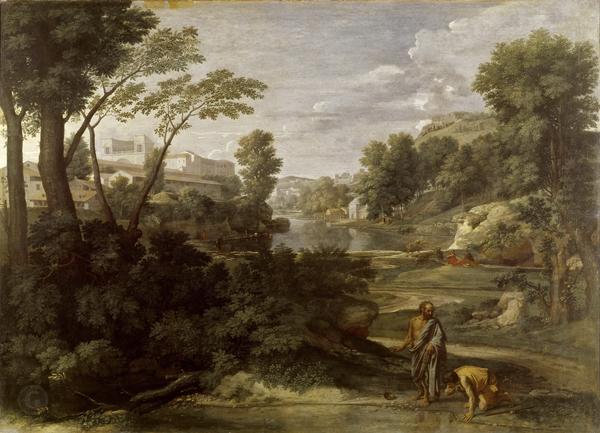An unknown artist from the circle of Jean-Victor Bertin painted Classical Landscape in the first half of the 19th century. This artist was either an apprentice or the follower of this master. The author depicted two personages on the bank of a water body surrounded by trees and rocks. The classicists believed that only perfect nature deserves to become art; that is why, even though they were inspired by real landscapes, they painted the generalized improved images.
Classical Landscape
Creation period
the first half of the 19th century
Dimensions
81,5x114,2 cm
Technique
canvas, oil painting
Collection
Exhibition
1
Open in app#1

The circle of Jean-Victor Bertin
Classical Landscape
#2
#3
Jean-Victor Bertin and his apprentices did not belong to classicism. They lived about 200 years later the bloom of this style, which emerged in the late 16th century, shined in the 17th century, and started to decay gradually in the late 18th-early 19th centuries. The Bertin’s circle created neo-classicist paintings based on the ideals of classicism.
#4
The ideas by Nicolas Poussin influenced their manner of painting greatly. Poussin lived in the 17th century and was the founding father of classicism. He believed that beauty was in proportion and consistent regularity of all parts of the painting
#5
Alexander Benois wrote about him:
“His art absorbs a very large circle of experiences, feelings and knowledge. However, the key feature of his work was bringing all of them to on single whole, to harmony”.
#6
Nature was an especially important subject for Poussin; for him it was the highest embodiment of rational and natural harmony. As a rule, Poussin included personages from mythology, Bible or Antique times into his landscapes.
#7
Nicolas Poussin. Landscape with Diogenes
#8
Such personages appeared on the background of the scenes of nature taken from real life, but improved and perfected. In order to finish and polish the painting, he followed a certain set of rules, which influenced several generations of artists.
#9
One of such rues as dividing the painting into several grounds. Later this solution was called the trichromatic landscape painting, and it is very visible in the Classical Landscape from Yaroslavl Museum of Fine Arts.
#10
The composition of the Classical Landscape comprises three grounds, i.e., three color zones, which may be seen if in your mind you divide the painting into three horizontal zones. The foreground is painted in warm ochroid hues. The second ground is based on the greenish colors. Cold blue spaces constitute the background.
#11
The artist depicted all the personages on the second ground in the centre. According to the rules of classicism, the artist had to paint them in very expressive clothes (if they were to wear any), because the subject of the painting should always be clear and recognizable. The author of the Classical Landscape definitely aspired for recognizability of the story. However, so far the experts have not been able to identify the specific legend depicted in the painting.
#12
Yaroslavl Museum of Fine Arts
read morehide
00:00
00:00
1x
Classical Landscape
Creation period
the first half of the 19th century
Dimensions
81,5x114,2 cm
Technique
canvas, oil painting
Collection
Exhibition
1
Open in app
Share



